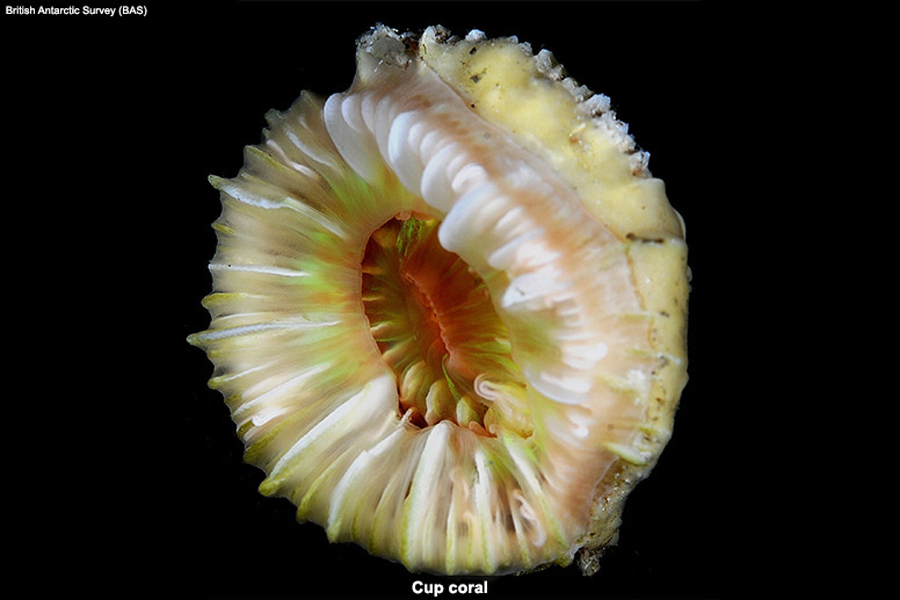
Expedition to Isolated Island Discovers Amazing Sea Life

What lurks in the deep water off the most remote inhabited island in the world? This past month, a team of researchers trekked to Tristan da Cunha, an island in the middle of the South Atlantic Ocean, to find out.
Marine biologist Sue Scott — who, over the past decade, has made dozens of dives in the rough water surrounding the island and helped chronicle the unique life there — went along on the trip. She's based in northwestern Scotland but finds herself repeatedly drawn to the island — this was her eighth trip — and is one of the few experts on the sea life there. Until now, nobody had seen what lurks just beyond the range of scuba divers, at a depth of about 150 to 300 meters (492 to 984 feet) beneath the ocean's surface. [Photos: Sea Life Off World's Remotest Island]
The researchers sailed to the island on British Antarctic Survey vessel the James Clark Ross; the expedition was funded, in part, by the Pew Charitable Trusts. Researchers sampled deep-sea life with a camera that took photos along the ocean bottom, and they used several trawls to scoop up deep-sea life.
Rich sea life
Among the most remarkable creatures found were the larvae of rock lobsters (Jasus tristani) which, at this life stage, are called puerulus and look like living translucent leaves with eye stalks, Scott told LiveScience's OurAmazingPlanet. Rock lobsters provide the primary source of income for the island's inhabitants, Scott said. The team also found hermit crabs, feather stars, starfish and sea cucumbers. It's very likely that several of them will be new species, considering many animals found in shallower waters are native to the island, and found nowhere else, Scott said.
In addition to sampling the bottom, the team also cast a net to see what lives in the middle of the water column above the seafloor. These nets yielded many "gelatinous, blobby things that will need a fair amount of identifying," Scott said. "I have no idea how some of these live."
Vulnerable species
Get the world’s most fascinating discoveries delivered straight to your inbox.
Another notable find was a small fish called a dragonet, which has only been recorded once off the island in shallower waters. The researchers also came across a variety of sea slugs, cup corals and black corals. Black corals have been harvested elsewhere in the world to be made into jewelry.
"Black corals are listed in Appendix II of the Convention on International Trade in Endangered Species of Wild Fauna and Flora, or CITES," Scott wrote in an online post detailing the expedition. "That means they are not necessarily threatened with extinction but may become so unless trade is strictly regulated."
Tristan da Cunha is a British territory located about 1,740 miles (2,800 kilometers) west of Cape Town, South Africa. It has only about 260 residents, according to the territory's website. Just eight vessels come ashore each year from South Africa with limited spots, Scott said, meaning trips to the island must be arranged long in advance.
Email Douglas Main or follow him on Twitter or Google+. Follow us @OAPlanet, Facebook or Google+. Original article on LiveScience's OurAmazingPlanet.

